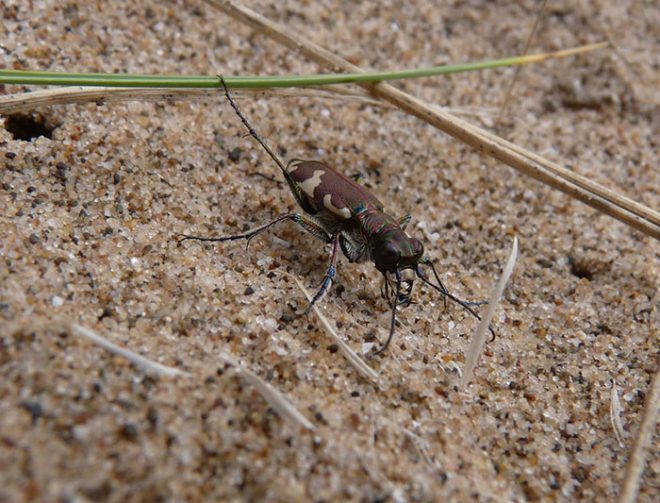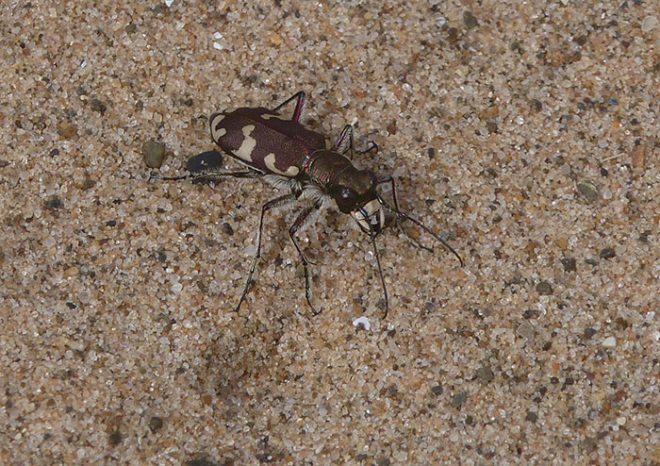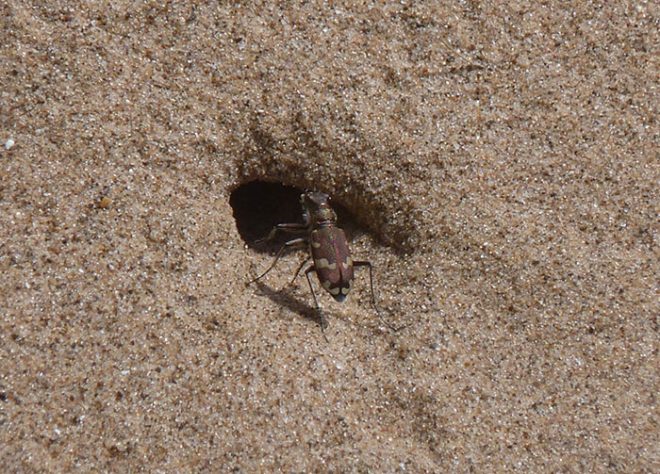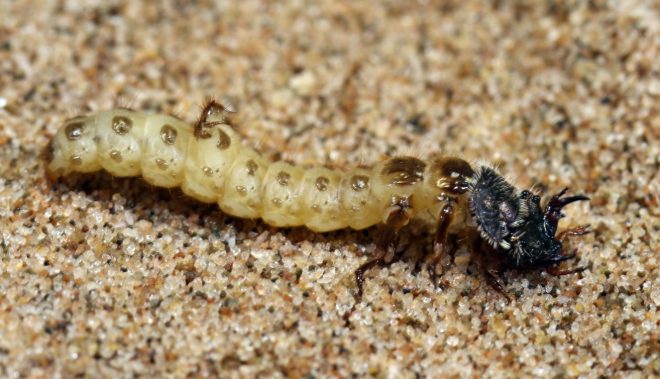On a recent sunny day I decided to have a day off from my entomological studies and went to the seaside to look for… well, insects actually.

Drigg Dunes, near Ravenglass in Cumbria, are home to one of only two populations of the Northern Dune Tiger Beetle (Cicindela hybrida) in Britain. In recent years I have been working with colleagues to monitor the population here. We have been counting the number of beetles along transects to get an idea of how the population is doing from season to season and year to year.


The fearsome mandibles of the adult beetle are used to dismember its prey. Tiger beetles are ferocious predators of other insects which they detect with their large eyes and then run down on their long legs. They also fly well and will catch prey on the wing.
Tiger beetles need open, bare sand to hunt over and bask in the sun so the exposed fore-dunes along the top of the beach provide the ideal conditions – when it’s not too windy! At night and on cool days the beetles excavate burrows in the dune face and bury themselves in the sand.

C. hybrida has a two year life cycle. Overwintering adults emerge in spring to mate and lay eggs. The resulting larvae develop through the summer and then over-winter to pupate and emerge as adults the following summer. These adults then over-winter to mate the year after. There are thus essentially two separate populations on the site, with one over-wintering as adults whilst the other hibernates as larvae, alternating each winter.
Like the adults, tiger beetle larvae are voracious predators equipped with powerful mandibles to catch their prey. They excavate a vertical shaft in the sand up to 20cm deep and position themselves at the top of the pit using their flattened head and thorax as a sort of manhole cover at the surface. They have a special pair of hooks halfway down the back of the abdomen which are stuck into the sandy wall of the shaft to lock the larva in position. When another insect comes crawling by, the tiger beetle larvae lunges out to grab it in its jaws. If threatened, the larvae will quickly drop down the shaft out of harm’s way.

I had heard of a trick of pushing a grass stem down the tunnel and enticing the larva to seize hold of it, thus enabling them to be carefully drawn out of their pits, still gripping the stem. I tried this and could feel the grass being firmly held in two or three burrows and eventually succeeded in ‘fishing’ one larva out. I felt a bit like an Inuit sitting by an ice-hole waiting for a seal to come up – perhaps this ‘sport’ could catch on with anglers looking for more of a challenge!
I believe this is the first time C. hybrida larvae have been found at Drigg, although records of the adult beetle stretch back to 1909 and it would be curious indeed if the larvae have not been there all along as well!
So how is the tiger beetle population at Drigg doing? We are still gathering data but it seems to be pretty healthy, although a ferocious storm a couple of winters ago which washed away a big area of fore-dune may have impacted on one of the alternating populations. We are continuing to monitor numbers to get a better picture of how the two populations compare and what longer term trends there might be.
